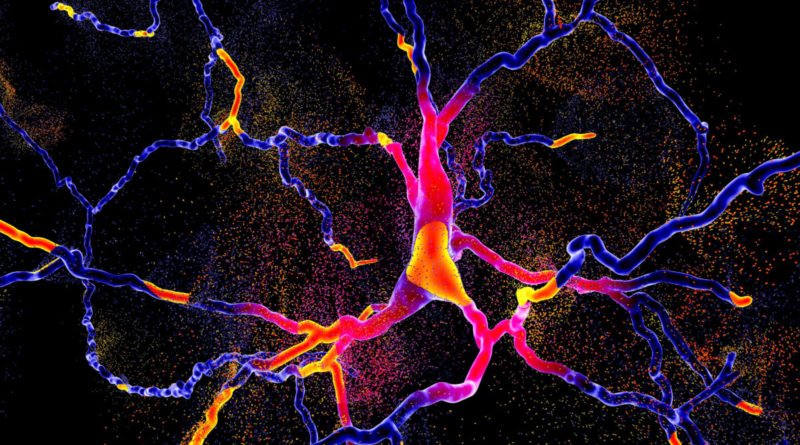Parkinson’s Disease—50 Percent Undiagnosed: Study
Parkinson’s disease is the second most common age-related disease affecting adults. However, recent research revealed an alarming observation: current estimates for the number of people diagnosed with Parkinson’s could be nearly 50 percent low.
The revelation is the result of work by researchers who combed through patient data from 2012 across several locations and health systems in Canada and the United States.
Key Findings
The study found that a person’s risk for Parkinson’s increases significantly from age 65 through 84. Both men and women have higher rates than previously thought, but men are diagnosed at a higher rate than women.
The study also noted that several geographic locations present a higher risk of Parkinson’s including Florida and Central Pennsylvania, the rust belt states, parts of Texas, and Southern California.
The study’s estimates show that as many as 90,000 people in the U.S. and Canada will be diagnosed with Parkinson’s annually. Previous estimates ranged from 40,000 to 60,000, according to the Parkinson’s Foundation.
Currently, the federal government, scientific community, and other agencies are accounting for as low as 40,000 Parkinson’s patients annually, while actual estimates are as high as 90,000—up 50 percent than previously thought.
“That’s a lot of people not being considered in the total disease burden of Parkinson’s Disease,” Dr. Honglei Chen, a physician and a professor of epidemiology and biostatistics at Michigan State University while speaking to The Epoch Times.
Parkinson’s Disease Remains Difficult To Detect and Treat
Parkinson’s is a disease that attacks the nerve cells that create a chemical called dopamine, resulting in low dopamine levels in the brain. Dopamine is responsible for muscle control and movement.
Parkinson’s symptoms mirror other age-related deficits and thus can be a tricky disease to diagnose.
“Parkinson’s disease can be suspected in an individual when a slight resting tremor develops in one hand, daily motor activities become slow, and motor dexterity reduces due to muscle and joint stiffness,” said Dr. Aparna Wagle Shukla, professor in the movement disorders division of the Department of Neurology at the University of Florida in an interview with The Epoch Times.
An individual may also notice early signs like speech turning soft, handwriting becoming smaller, a slight change in posture, slower walking, and reduced arm swing.
Other nonmotor symptoms include “hyposmia (reduced ability to detect odors), REM sleep behavior disorder (acting out vivid dreams), and constipation.
Shukla said that these “nonmotor symptoms” usually present themselves before the more obvious motor function related-symptoms by several years.
Despite these early symptoms, Parkinson’s is almost always diagnosed after a person begins experiencing more obvious motor function issues.
“The vast majority of the diagnosis still rely on the clinical presentation of the symptoms,” said Chen.
There are some imaging-related techniques to assist doctors in making the diagnosis, but Chen explained that the only real way to be absolutely sure that a person has Parkinson’s is to examine their brain post-mortem—something that many families aren’t thinking about after the loss of a loved one.
Non-Genetic Risk Factors
While it has generally been accepted that there are non-genetic risk factors, Chen said it is not clear what they are. Research has focused on exposure to pesticides, personal care items, air pollutants, and heavy metals as possible risk factors.
Other factors outside of a person’s genetic makeup and their environmental exposures are considered lifestyle factors, such as the amount of exercise a person does and their overall mental well-being.
A 2021 study published in Nature found a possible relationship between Parkinson’s symptom severity and the patient’s reported stress level.
But whatever the causes—Chen said that the disease is showing no signs of slowing down.
“Unlike other neurological conditions, you see a potential increasing trend in Parkinson’s over the last 30 years,” said Chen. “For dementia, there is a slight increase, but for Parkinson’s, you see an increase in prevalence and cause-specific mortality. That by itself is a concern.”
New Treatments and Therapies Continue To Be Discovered
The most common treatment for Parkinson’s is a drug called levodopa, which helps nerve cells produce more dopamine. According to the National Institute on Aging, levodopa is normally given in conjunction with another drug called carbidopa, which is prescribed to ease the side effects of levodopa, which can include nausea, vomiting, low blood pressure, and restlessness.
Some recent treatment experiments have revolved around using stem cells to grow new nerve cells and replace damaged neurological tissue.
According to a press release from Lund University in Sweden, scientists will be trialing the new procedure on patients in both Sweden and the United Kingdom next year. Researchers hope the new therapy will change the way the disease is treated.
The FDA recently cleared Turkish biotech company h2o therapeutics to make available its Parkinson’s Disease symptom-tracking app “Parky” to the marketplace. The app helps detect tremors and other muscle control-related symptoms via a smartwatch, which helps patients determine if their current medications are working.
Researchers who studied the app’s effectiveness found it useful for helping patients find the right dose of medications before symptoms worsen. The app also has programs to guide users through exercise plans and mindfulness practices to help alleviate symptoms.





